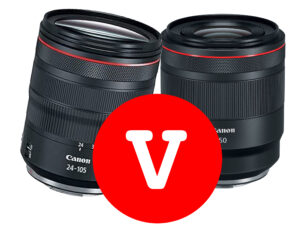In the competitive world of advertising, the goal is simple yet elusive: to make your message memorable. Enter the Zeigarnik Effect—a principle from cognitive psychology that can revolutionize the way marketers approach their campaigns. By leaving tasks or visuals incomplete, you can create a lasting impression on your audience, driving recall and engagement far beyond conventional methods.
What Is the Zeigarnik Effect?
The Zeigarnik Effect, named after Lithuanian psychologist Bluma Zeigarnik, reveals that people remember unfinished tasks better than completed ones. Discovered in the 1920s, this effect has been supported by countless studies showing that the cognitive tension of an incomplete task makes it linger in the mind.

I remember interrupted or ongoing tasks and problems more easily than I remember ones that are completed or solved.
Cloe Gratton
Consider the last TV show cliffhanger that had you eagerly awaiting the next episode or the Wordle puzzle you didn’t finish. Unresolved experiences demand attention. In advertising, this psychological phenomenon can work wonders for brand recall and engagement.
How the Zeigarnik Effect Can Make Your Ads Unforgettable
In the competitive world of advertising, the goal is simple yet elusive: to make your message memorable. Enter the Zeigarnik Effect—a principle from cognitive psychology that can revolutionize the way marketers approach their campaigns. By leaving tasks or visuals incomplete, you can create a lasting impression on your audience, driving recall and engagement far beyond conventional methods.
Discovering the Zeigarnik Effect
The Zeigarnik Effect, named after Lithuanian psychologist Bluma Zeigarnik, reveals that people remember unfinished tasks better than completed ones. Discovered in the 1920s, this effect has been supported by countless studies showing that the cognitive tension of an incomplete task makes it linger in the mind.

Consider the last TV show cliffhanger that had you eagerly awaiting the next episode or the Wordle puzzle you didn’t finish. Unresolved experiences demand attention. In advertising, this psychological phenomenon can work wonders for brand recall and engagement.
Tesco’s Brilliant Use of the Zeigarnik Effect in 2024
A recent Tesco campaign epitomizes this strategy. Billboards featuring their iconic blue dashes were paired with random food items instead of the usual logo. The missing “Tesco” forces viewers to complete the puzzle in their minds, creating both cognitive engagement and lasting recall.
This clever execution also taps into the generation effect, another psychological principle where people remember information better when they generate it themselves. By figuring out that Edam cheese represents the “E” in Tesco, consumers actively participate in the branding process—enhancing their connection to the message.
Why This Works
- Engagement Through Cognitive Tension:
Incomplete ads challenge the audience, making them linger on the message longer than a straightforward campaign. - Memorability via the Generation Effect:
By constructing the brand name themselves, consumers internalize it more deeply than if they had passively viewed it. - Distinctiveness:
Few brands are bold enough to omit their logo. Tesco’s strategy stands out in a sea of overly explicit advertising, drawing more attention.
The Rules for Using the Zeigarnik Effect in Marketing
- Build a Strong Foundation First:
This approach only works for brands with well-established codes. Tesco’s blue dashes have been ingrained in consumer memory for decades, making this strategy effective. Newer brands should focus on consistent messaging before experimenting with abstraction. - Be Brave and Unexpected:
Ads that embrace the Zeigarnik Effect challenge traditional norms. This requires marketers to loosen their grip on conventional branding rules and trust the intelligence of their audience. - Keep It Temporary:
The novelty of incomplete ads fades quickly. Use this tactic sparingly to maximize its impact without diluting its effectiveness.
Learn more about playing with brand codes.
What This Means for Marketers
The Zeigarnik Effect isn’t just a quirky psychological insight; it’s a powerful tool for marketers looking to break through the noise. By embracing ambiguity and inviting audience participation, brands can create memorable, engaging campaigns that stand out in a crowded marketplace.
For marketers brave enough to play with their brand codes, the results can be remarkable. But remember—this strategy demands both a solid foundation of brand equity and a willingness to step outside your comfort zone.







































































